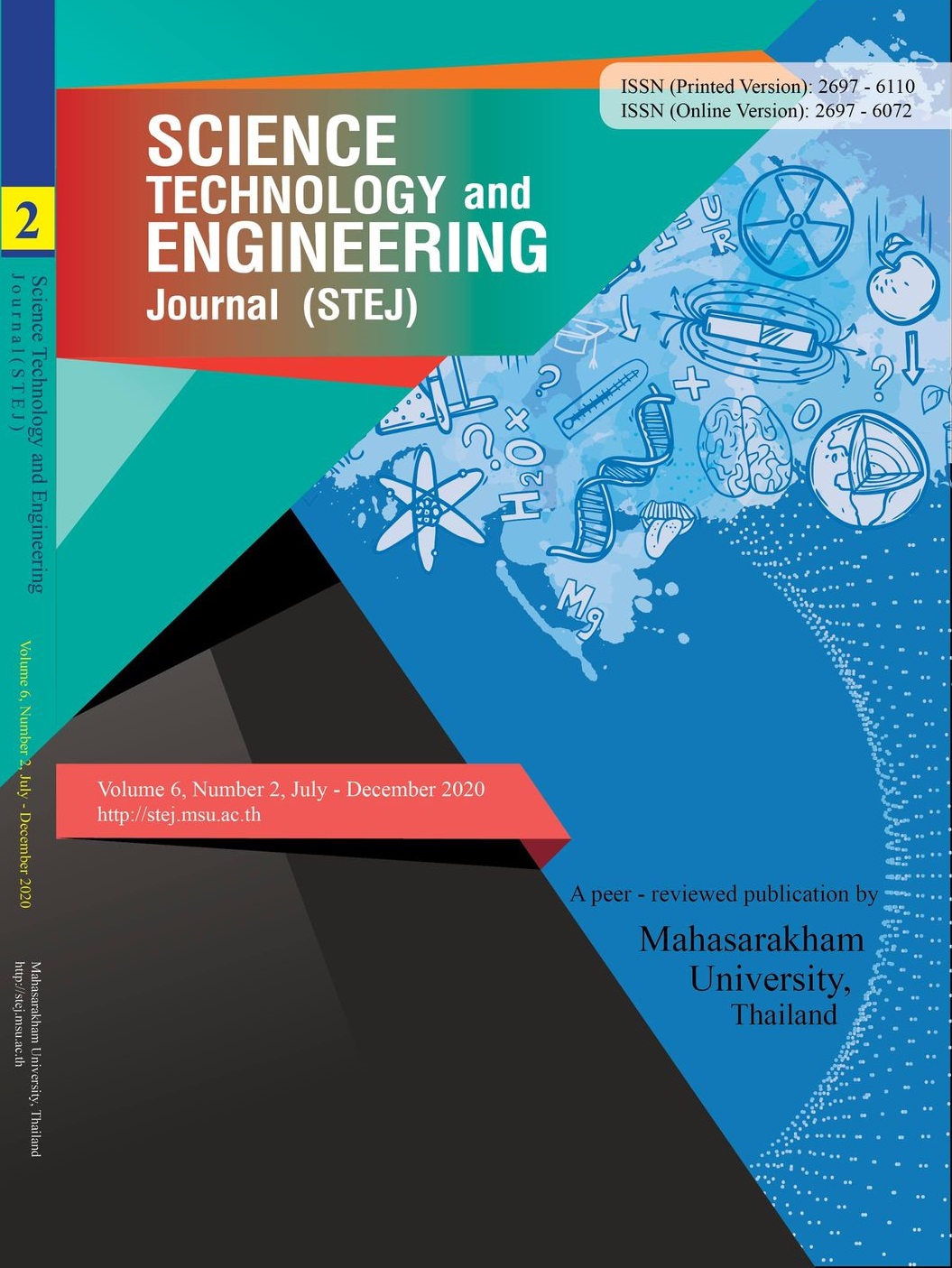Growth of Caesalpinia Sappan L. by using Different Growing Media and Evaluation of Antioxidant Activity of Foliage
Keywords:
antioxidant activity, rice husk, rice husk biochar, coconut coir dust, Caesalpinia sappanAbstract
Caesalpinia sappan L. is a herb and dyeing plant which is found naturally in Thailand. Cultivation is an alternative way to conserve C. sappan in nature. Farmers in local areas are interested in planting C. sappan because of its agricultural by-products. This study investigated the effects on C. sappan L of rice husk, rice husk biochar, coconut coir dust and their combination as growing media on growth, TPC, TFC and antioxidant activity. The results showed that plant height, stem diameter, leaf length, leaf width, petiole length and leaf number increased from 1 to 8 months after transplanting to a field. All treatments produced greater plant height, stem diameter and leaf numbers after 8 months following transplanting, except for the coconut coir dust treatment (T4). In addition, there was a positive correlation between plant height and stem diameter. After three and a half years, stem diameter and the total flavonoid compound of C. sappan grown in rice husk (T2) were higher than control. At this period, there was no correlation between stem diameter and TPC, TFC or antioxidant activity. All the treatments of C. sappan produced diameters ranging from 49.2 to 69.9 mm. In conclusion, the growing media after composting had a greater effect on plant growth than non-composting. The identification of bioactive compounds and antioxidant activity from C. sappan for all treatments may play an important role in health benefits and for developing novel functional ingredients in animal feed.
Downloads
Published
How to Cite
Issue
Section
License
Copyright (c) 2020 Science Technology and Engineering Journal (STEJ)

This work is licensed under a Creative Commons Attribution-NoDerivatives 4.0 International License.







